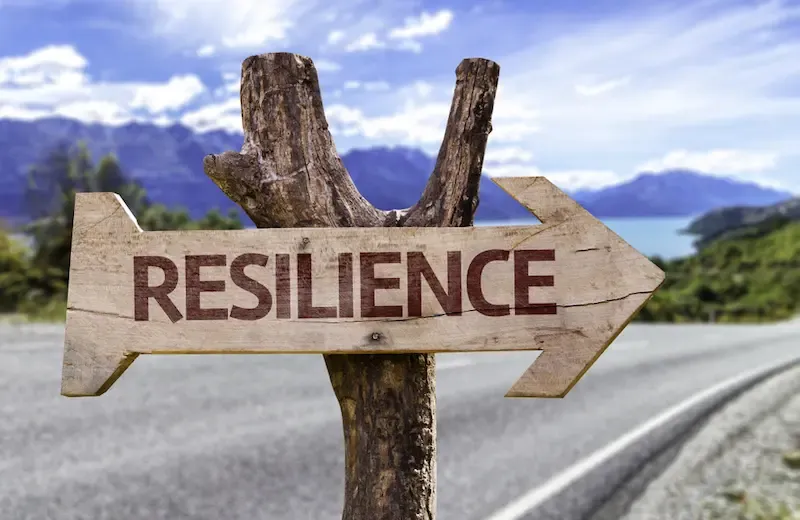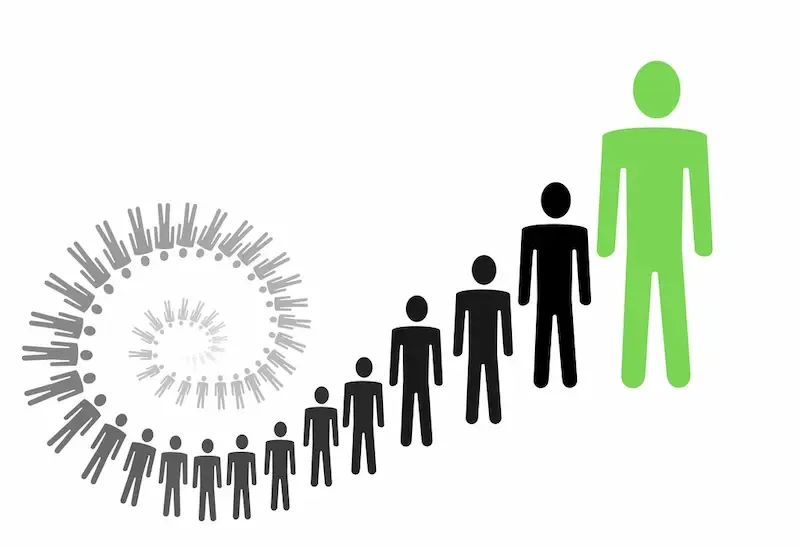The keys to unlocking personal growth and achieving lasting success lie in two fundamental traits: patience and resilience. According to a recent study published in the Journal of Positive Psychology, individuals who cultivate these qualities experience greater life satisfaction and attain their goals more effectively. As the fast-paced nature of modern life brings an abundance of stressors, experts suggest that understanding and developing patience and resilience can drastically alter one’s trajectory toward fulfillment.
“Patience is not simply the ability to wait; it’s how we behave while we’re waiting,” remarked Dr. Jane Thompson, a psychologist specializing in behavioral science. Similarly, resilience isn’t merely about bouncing back from adversity but evolving stronger with each challenge overcome. Historical figures like Nelson Mandela exemplify the power of perseverance through tumultuous times, proving that enduring difficulties with grace can lead to profound outcomes. In professions laden with stress or for those embarking on journeys of self-discovery, mastering these attributes could mean the difference between success and stagnation.
Understanding Patience
Patience, often defined as the capacity to tolerate delay or discomfort without getting angry or upset, plays a crucial role in daily life. It is a trait that allows individuals to remain calm and composed during challenging situations, enabling thoughtful decision-making rather than impulsive reactions. In personal growth pursuits, patience can be the linchpin for achieving long-term goals, fostering persistence and endurance when faced with difficulties.
Historical figures have repeatedly demonstrated the transformative power of patience. One notable example is Mahatma Gandhi, whose patient nonviolent resistance led India to independence from British rule. His ability to endure years of setbacks and oppression without resorting to violence highlighted the strength inherent in patience. Another illustration comes from Thomas Edison; his tireless pursuit of inventing the electric light bulb required immense patience amidst thousands of failed attempts. Edison’s famous remark — “I have not failed 10,000 times; I’ve successfully found 10,000 ways that will not work” — underscores how patience propels innovation.
These historical examples reveal that patience is more than mere waiting; it involves an active engagement with adversity while maintaining hope and determination. As society becomes increasingly fast-paced and focused on immediate results, understanding and practicing patience has become even more vital for navigating modern challenges effectively. This quality not only aids personal development but also fosters resilience against life’s inevitable uncertainties and obstacles.
The Science of Resilience
Resilience is the ability to adapt and bounce back from adversity, setbacks, or significant sources of stress. It plays a crucial role in maintaining emotional balance and contributes significantly to an individual’s overall mental health. Psychologists believe that resilience isn’t just about enduring difficult situations but also involves a growth mindset and the capacity to learn from challenges faced. This trait empowers individuals to manage their lives more effectively without being overwhelmed by life’s inevitable hardships.

Research supports the psychological benefits of resilience, highlighting its significant impact on mental well-being. A 2018 study published in the journal “Behavioral Sciences” found that higher levels of resilience are associated with lowered symptoms of anxiety and depression, especially among students and professionals under constant stress. Additionally, resilient individuals often display increased self-efficacy and optimism — qualities essential for overcoming obstacles. These findings underscore the importance of nurturing resilience as a protective buffer against mental health issues.
Further, neuroscience offers insight into how resilience functions within the brain. Studies utilizing neuroimaging techniques have observed that resilient people exhibit greater activity in certain areas of the prefrontal cortex — regions linked to executive function and impulse control — in response to stressors. This neural adaptability enables them to regulate their emotions better during distressing situations, fostering improved coping mechanisms over time. By understanding these scientific perspectives on resilience, individuals can be more intentional about developing this attribute to enhance their overall well-being and life satisfaction.
Real-Life Examples of Patience and Resilience
Throughout history, numerous well-known individuals have embodied patience and resilience, leading them to triumph despite daunting challenges. One such example is Nelson Mandela, who spent 27 years in prison during South Africa’s apartheid regime. His ability to remain patient and resilient throughout his incarceration became a defining symbol of the anti-apartheid struggle. Mandela’s resolute spirit eventually led him to become South Africa’s first black president, demonstrating how patience and endurance can pave the way for monumental personal and societal change.
In addition to iconic figures like Mandela, ordinary individuals also exhibit remarkable stories of overcoming adversity through these traits. Consider the case of J.K. Rowling, now a household name due to the success of her Harry Potter series. Before achieving fame, she faced financial struggles as a single mother while repeatedly being rejected by publishers. Her steadfastness and determination eventually paid off when her manuscript was accepted after numerous refusals — proving that patience combined with resilience can result in extraordinary achievements against all odds.
Closer to home, countless everyday heroes display patience and resilience yet often go unnoticed. For instance, survivors of natural disasters frequently rebuild their lives from scratch amid vast devastation. In the aftermath of events like Hurricane Katrina or more recent hurricanes affecting parts of the United States, communities have shown incredible perseverance in their recovery efforts. Such real-life examples highlight that regardless of scale or recognition, patience and resilience are universal tools essential for overcoming life’s unpredictable hardships.
Practical Strategies to Develop Patience
Cultivating patience begins with the practice of mindfulness, a method that encourages individuals to focus on the present moment without judgment. Researchers from Harvard University found that mindfulness meditation can activate brain areas related to attention and emotion regulation, providing a scientific basis for its effectiveness in enhancing patience. By regularly setting aside time for meditation, individuals can build an awareness that helps reduce impulsive responses and enhances their ability to tolerate delays and frustrations.

Incorporating deep breathing exercises into daily routines is another practical technique. Deep breathing slows down the body’s stress responses, allowing one to approach stressful situations with a calmer mindset. For instance, taking slow, deliberate breaths during moments of high tension has been shown to lower heart rates and decrease anxiety levels. This simple yet powerful tool can be employed anytime throughout the day — whether stuck in traffic or awaiting an important outcome — to extend one’s capacity for patience.
Another effective strategy involves practicing gratitude. Studies indicate that regularly reflecting on things one is grateful for can shift focus from short-term discomforts to long-term benefits, fostering greater endurance when facing challenges. Writing in a gratitude journal each night not only improves emotional well-being but also reinforces a patient outlook by highlighting positive aspects even during trying times. Over time, these practices ingrained into daily habits can transform one’s ability to wait patiently and remain resilient amidst life’s inevitable difficulties.
Building Resilience: Tools and Techniques
Resilience is not an innate trait but a skill that can be developed over time. One effective method for enhancing resilience involves adopting a growth mindset, which encourages viewing challenges as opportunities for learning rather than insurmountable obstacles. Studies have shown that individuals with a growth mindset are more likely to bounce back from setbacks because they perceive failure as a natural part of the learning process.
Additionally, stress management techniques such as mindfulness meditation and deep breathing exercises can fortify an individual’s ability to handle adversity. Mindfulness practices help cultivate awareness of the present moment, reducing the impact of stressful thoughts on one’s mental state. Research conducted by Dr. Jon Kabat-Zinn has demonstrated that these practices not only alleviate stress but also contribute to building emotional resilience by fostering emotional regulation and a sense of calm during challenging situations.
Social support systems play a crucial role in fostering resilience, acting as buffers against stress-related factors. People who maintain strong social connections often exhibit enhanced coping abilities when faced with hardships. A landmark study by psychologists at Brigham Young University found that individuals with robust social networks tend to have lower levels of stress and higher rates of recovery after significant life events compared to those with limited social ties. Engaging in community activities or support groups provides emotional sustenance, offering encouragement and diverse perspectives during times of need.
Incorporating these tools and leveraging supportive networks can significantly bolster one’s capacity to recover from setbacks. By actively working on resilience skills and surrounding oneself with empathetic allies, individuals can better navigate life’s uncertainties and increase their overall psychological well-being.
The Interconnection Between Patience and Resilience
Developing patience can significantly bolster one’s resilience, as both traits share a foundation in enduring difficulty and managing stress. Patience involves tolerating delays or inconveniences without frustration, while resilience is the ability to recover from setbacks quickly. A patient person who does not react impulsively during challenging situations often builds mental reserves that aid in bounce-back efforts. Conversely, resilient individuals inherently understand the importance of waiting for outcomes without losing hope, thereby reinforcing their capacity for patience.
A clear illustration of this interplay is evident in the field of scientific research. Scientists often spend years testing hypotheses and experimenting with results that may not always support their initial assumptions. Patience enables them to persist through prolonged trials; resilience helps them handle repeated failures without abandoning their scientific pursuits. Another example is seen among elite athletes recovering from injuries: straightforward patience aids their adherence to rehabilitation routines, while resilience strengthens their determination to return stronger than before.
In business environments, leaders frequently rely on both patience and resilience to navigate market turbulence and organizational changes effectively. When unforeseen circumstances arise, those equipped with these traits don’t just endure periods of instability — they learn from them. For instance, during economic downturns, patient yet resilient entrepreneurs remain committed to long-term goals despite immediate financial pressures, adjusting strategies thoughtfully rather than reacting hastily. Thus, cultivating both patience and resilience allows individuals to tackle life’s complexities with greater confidence and clarity, leading to sustained success across diverse aspects of life.
Overcoming Challenges Through Patience and Resilience
Developing patience and resilience, while vital to personal growth, poses several challenges. One common hurdle is the pervasive influence of instant gratification in today’s fast-paced world. According to a 2022 study by Stanford University, individuals struggle with waiting for long-term rewards when immediate alternatives are available, highlighting this dilemma. Additionally, societal pressures to achieve swift success can discourage persistence and undermine resilience efforts.

Maintaining motivation during this journey requires intentional strategies. Establishing small yet achievable goals can provide a sense of accomplishment and reinforce one’s commitment to developing these traits. “The key is setting realistic expectations,” suggests Dr. Heidi Grant Halvorson, author of “Succeed: How We Can Reach Our Goals.” She emphasizes that celebrating minor victories helps maintain morale and momentum.
Another effective strategy involves building a support network of friends, family, or mentors who offer encouragement and perspective during difficult times. This aligns with research from the Journal of Personality and Social Psychology (2019), which underscores the role of social connections in fostering emotional resilience. Practicing gratitude daily can also shift focus away from setbacks towards positive aspects of life, further supporting sustained effort in cultivating patience and resilience.
Integration into Daily Life
Incorporating patience and resilience into everyday activities can significantly enhance both personal and professional realms. In the workplace, embracing patience allows individuals to handle stress with composure, improving decision-making processes even under pressure. For example, a project manager might employ patience when dealing with unexpected delays, thus fostering a more collaborative team environment focused on solutions rather than assigning blame. Similarly, resilience can be nurtured by setting realistic goals and celebrating small victories within teams. This approach not only builds morale but also cultivates a culture of perseverance.
Personal relationships benefit profoundly from the exercise of patience and resilience. When navigating conflicts or misunderstandings, patience provides the necessary pause for thoughtful reflection before reacting, which often leads to more constructive outcomes. Meanwhile, resilience fortifies emotional strength after disagreements or setbacks have occurred. A couple working through financial difficulties may find that these traits help them communicate effectively and support one another throughout stressful periods, ultimately strengthening their partnership.
On an individual level, aligning personal goals with patience and resilience fosters sustainable growth over time. For those aiming to achieve long-term fitness milestones or academic advancements, breaking down ambitions into manageable steps can prevent burnout while maintaining motivation. The consistent application of these traits helps individuals adapt to challenges as they arise, ensuring progress continues despite obstacles. Over time, embedding patience and resilience into daily life results in enhanced mental well-being and increased capacity for handling life’s inevitable ups and downs.
By making patience and resilience foundational elements of daily practice, individuals are likely to experience significant improvements across multiple areas of life. The long-term benefits include better stress management capabilities, enriched interpersonal interactions, and a more fulfilled personal journey toward achieving one’s aspirations. These traits become not just responses to adversity but proactive tools that foster ongoing success and contentment in all facets of existence.
Harnessing Patience and Resilience for Personal Growth
In summary, cultivating patience and resilience acts as a catalyst for personal growth and success. These traits are not merely abstract concepts; they have tangible benefits that echo throughout the course of an individual’s life. Through historical examples and scientific findings, the article highlighted their profound impact on mental well-being and problem-solving capabilities. Real-life stories from both notable personalities and everyday people further emphasize how patience can master significant challenges while resilience allows recovery from setbacks.
To incorporate these qualities into daily life is not to undertake a difficult act, but rather an attainable journey with practical strategies outlined in the preceding sections. By building these skills, individuals become better equipped to handle adversity at work, in relationships, and toward achieving long-term goals. Readers are encouraged to start this transformative journey embracing patience and resilience as essential tools in their arsenal for personal development.





